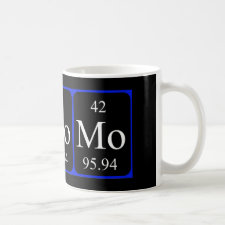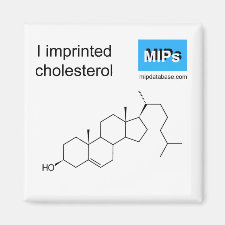
Authors: Polyakova I, Borovikova L, Osipenko A, Vlasova E, Volchek B, Pisarev O
Article Title: Surface molecularly imprinted organic-inorganic polymers having affinity sites for cholesterol.
Publication date: 2016
Journal: Reactive and Functional Polymers
Volume: 109
Page numbers: 88-98.
DOI: 10.1016/j.reactfunctpolym.2016.10.010
Alternative URL: http://www.sciencedirect.com/science/article/pii/S138151481630205X
Abstract: Novel granular organic-inorganic molecularly imprinted polymers (MIPs) based on 2-hydroxyethyl methacrylate (HEMA) and ethylene glycol dimethacrylate (EGDMA) were prepared by co-polymerization on the surface of selenium (Se) nanoparticles stabilized with poly(vinyl pyrrolidone) (PVP) at different concentrations of cholesterol as a template molecule. The synthesis occurred in Pickering microemulsion. The obtained compounds are intended for use as selective hemosorbents in efferent therapy of hypercholesterolemia. The sorbents were characterized by scanning electron microscopy (SEM), Fourier transform infrared spectroscopy (FTIR) and sorption experiments. It was revealed that MIPs possess more pronounced porous structure as compared to that of the reference non-imprinted polymer (NIP). The influence of the amount of introduced cholesterol template on physico-chemical and sorption properties of MIPs was investigated. FTIR spectroscopy and thermodynamic studies showed that the affinity of MIPs towards cholesterol is related to multi-point polyfunctional binding of adsorbate in complementary cavities or imprint sites; hydrogen bonds play the key role in recognition of the target molecule. The Langmuir, Freundlich, Temkin and BET model isotherms were used for interpreting the experimental data on the equilibrium sorption experiments. The maximum adsorption capacities increased for the MIP synthesized at the highest molar concentration of the template. Cholesterol adsorption proceeded in the monolayer within a wide concentration range, and the data obtained in these experiments better conformed to the Langmuir isotherm. Formation of the surface sorption layer in the MIPs facilitates availability of imprint sites and enhances the efficiency of specific cholesterol binding from blood plasma in vitro
Template and target information: cholesterol
Author keywords: surface molecular imprinting, Specific cholesterol sorption



Join the Society for Molecular Imprinting

New items RSS feed
Sign-up for e-mail updates:
Choose between receiving an occasional newsletter or more frequent e-mail alerts.
Click here to go to the sign-up page.
Is your name elemental or peptidic? Enter your name and find out by clicking either of the buttons below!
Other products you may like:
 MIPdatabase
MIPdatabase









